
Welcome Akamas 1.9!
15 Oct
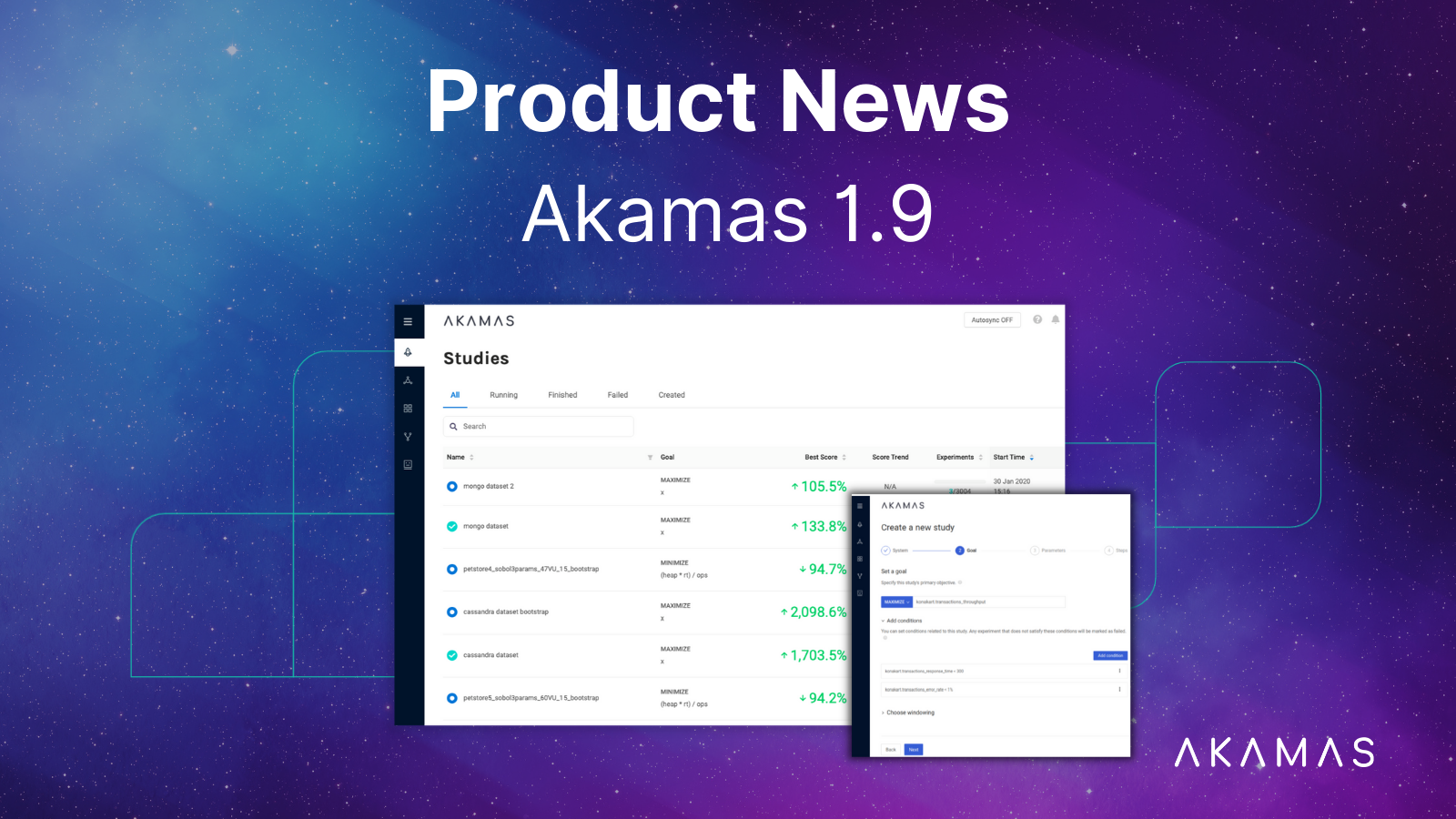
We are excited to announce the release of Akamas 1.9! We have included a lot of great features, focusing on improving user experience and providing even greater optimization wins for our users.
UI-based optimizations: Tired of working with YAML files? You can now create and run optimization studies from scratch directly from the Akamas UI with a new guided wizard.
Java optimization improvements: We added 18 new performance-boosting JVM parameters to the Java OpenJDK optimization pack. Get ready to extract even more performance and cost savings from your Java apps!
AWS EC2 optimization improvements: The AWS EC2 optimization pack has been updated with the latest AWS EC2 offerings, enabling Akamas to pick the optimal instances for your applications. Also, the new integration with the AWS pricing APIs ensures that your optimizations stay up-to-date with AWS price changes.
Other improvements: We have added several new features aimed at making Akamas automation even more robust and secure.
UI-Based Optimizations
Engineers like us love CLIs and configuration files, but sometimes a YAML file can be annoying. Akamas latest release allows you to create and run AI-driven optimizations with just a few clicks of your mouse. In our ongoing effort of making Akamas more autonomous and simpler to use, we have introduced a UI wizard that walks you through the steps to set up a new optimization study from scratch very easily, and without writing a single line of YAML. YAML or UI interaction? No matter, you can do both with Akamas!
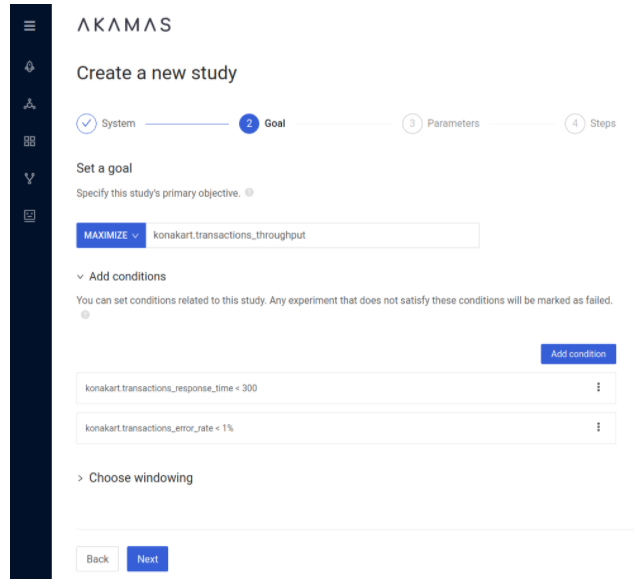
Java Optimization Improvements
Java applications power today’s biggest online services and enterprise applications. Yet, teams struggle with the extensive human effort (and skills) involved with JVM tuning initiatives required to maximize application performance and reduce infrastructure costs. At Akamas, JVM tuning is a core target and we continue to invest to understand how to exploit the almost infinite optimization possibilities of modern JVMs.
With this new release, we added a new set of 18 performance-boosting JVM parameters to the Akamas Java OpenJDK optimization pack. Thanks to this new level of tuning, teams can extract even more performance and cost savings from their Java applications, eliminating today’s trial-and-error manual tuning.
Are you ready to take your JVM tuning initiatives to the next level? Discover what Akamas can do to automate JVM tuning!
AWS EC2 Optimization Improvements
Wondering if you picked the least expensive AWS instances for your applications? You are not alone, considering the 175+ instance types you can choose from!
With this new release, we further improved Akamas EC2 optimization with the following new capabilities:
- The integration with AWS Price List APIs, so that you can make sure the price of AWS services within Akamas is always up-to-date.
- The updated AWS EC2 optimization pack, which allows you to optimize the price-performance of your applications leveraging the latest AWS instances, including the new ARM-based M6g instances.
- The integration with AWS Cloudwatch to gather EC2 performance and resource usage metrics via our Prometheus telemetry module.
- The availability of automation scripts based on Ansible, to let you quickly start EC2 optimizations if you don’t have automation already.
Akamas takes a new approach to cloud optimization, allowing you to maximize the price-performance of your applications based on real-life performance experiments. Download our solution brief to learn more!
Other Improvements
This new release also brings highly requested improvements to reach really hands-off automated optimizations.
A common requirement is to leave the target system in a predefined state after an optimization activity completes. You can now tell Akamas to restore a desired configuration (e.g. the baseline) at the end of the study. Also, users can now control timeout and retries for each task in your automated performance experiments, such as a load test launch.
Last but not least, we further enhanced Akamas security. Some of us think of an IP or a user name as sensitive information, others don’t. Users can now specify how custom properties should require extra care from a security perspective, and be encrypted at the application level and hidden from the user.
Categories
Stay up to date
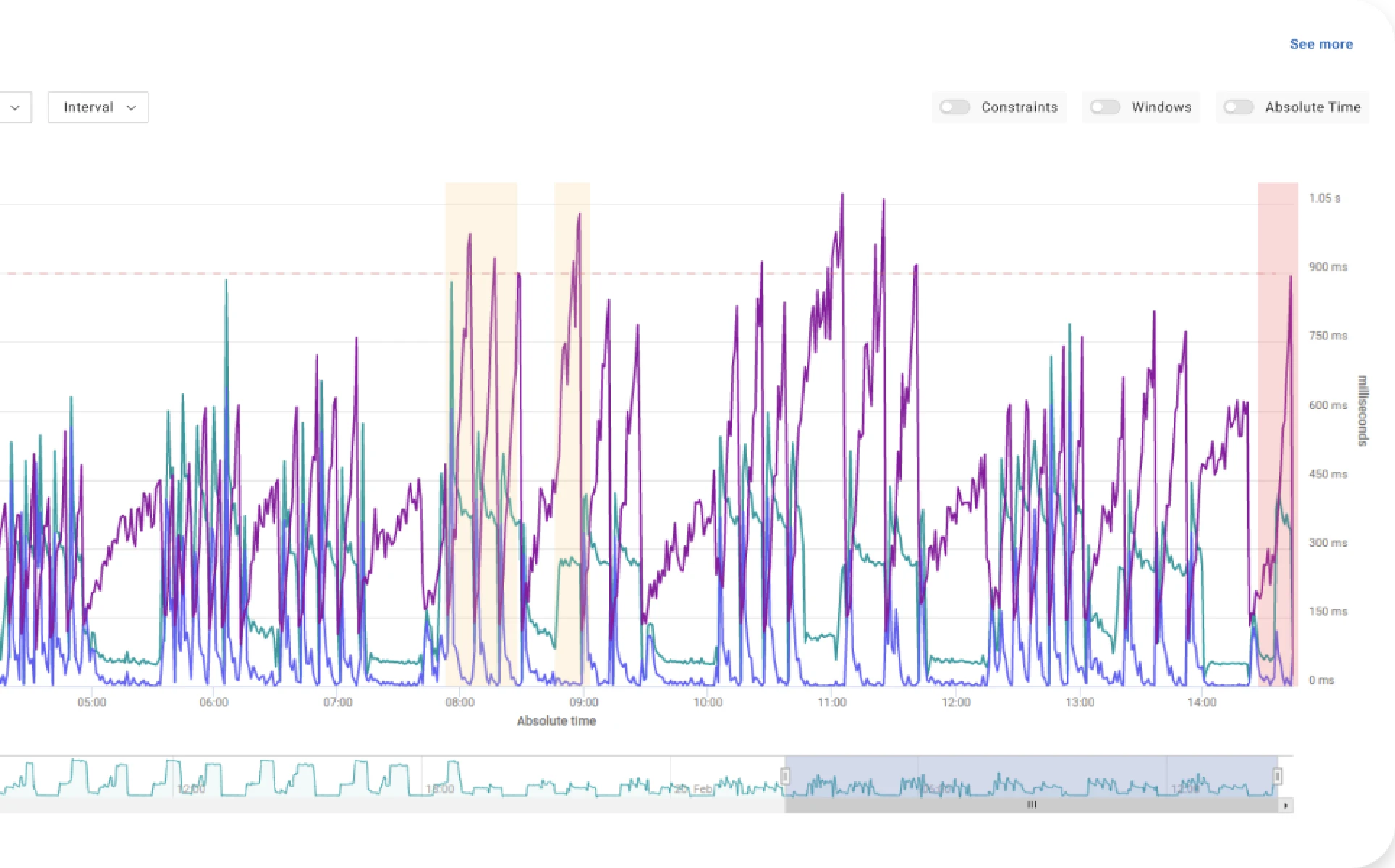
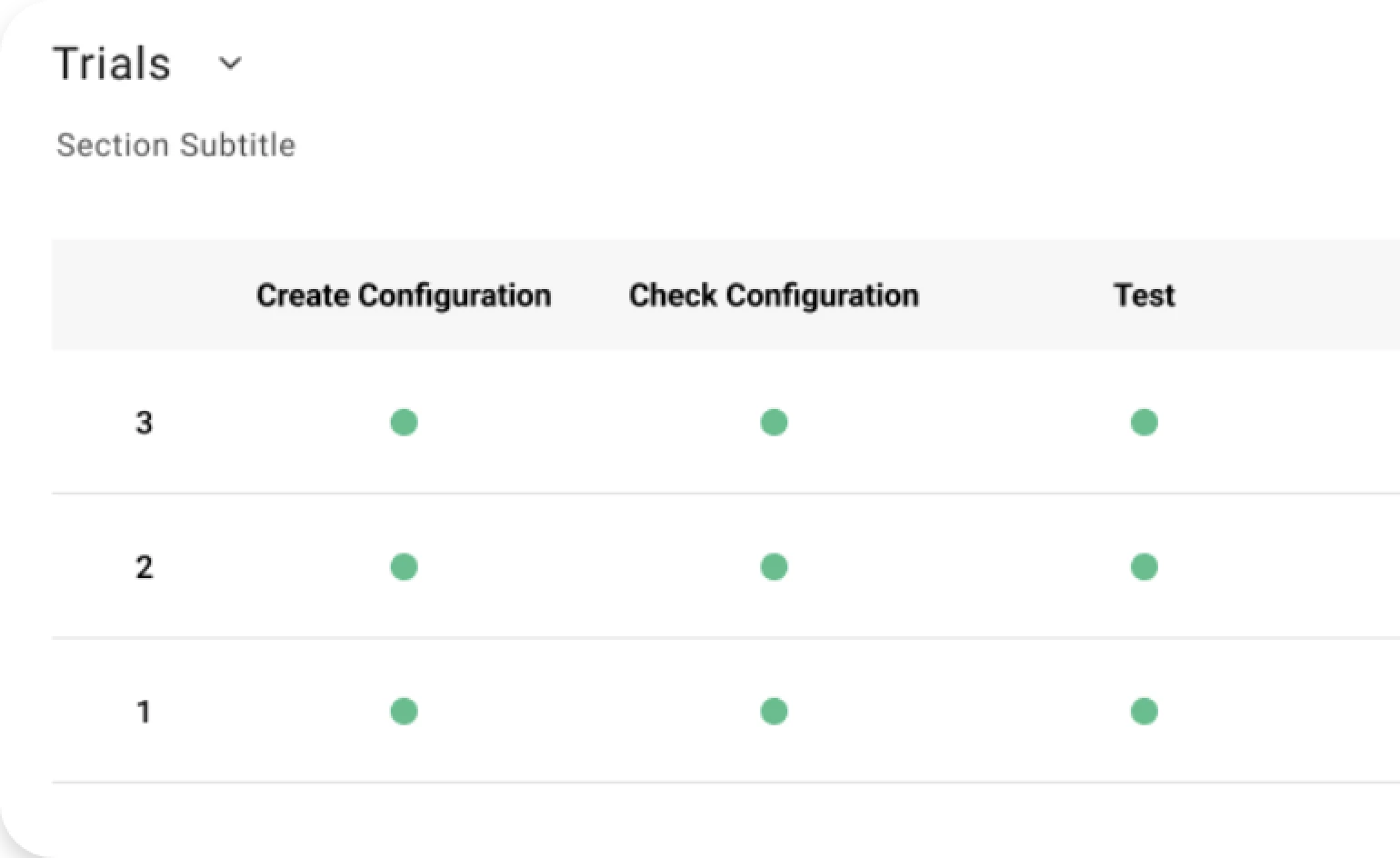
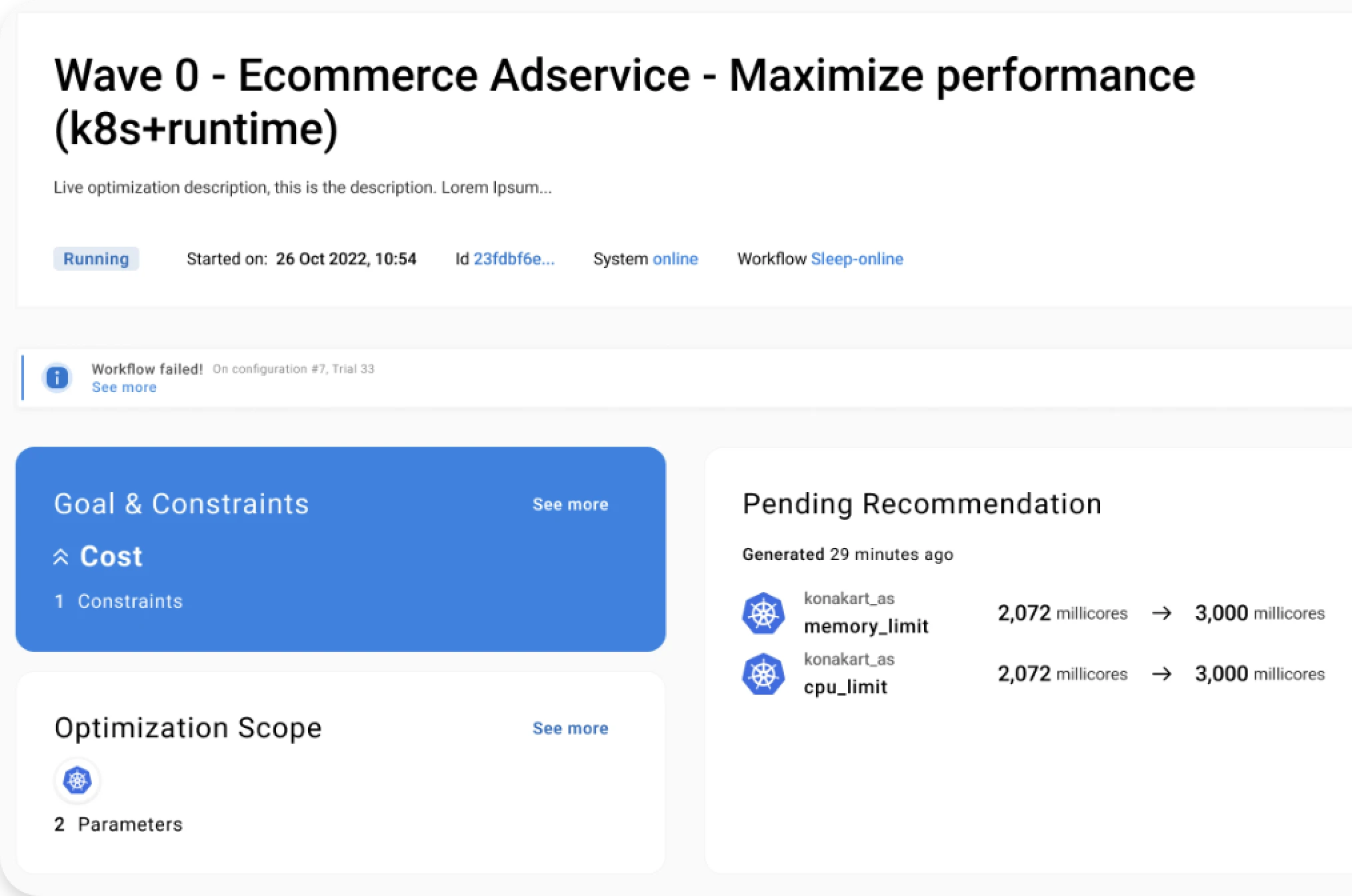
See for yourself.
Experience the benefits of Akamas autonomous optimization.
No overselling, no strings attached, no commitments.
© 2024 Akamas S.p.A. All rights reserved. – Via Schiaffino, 11 – 20158 Milan, Italy – P.IVA / VAT: 10584850969
